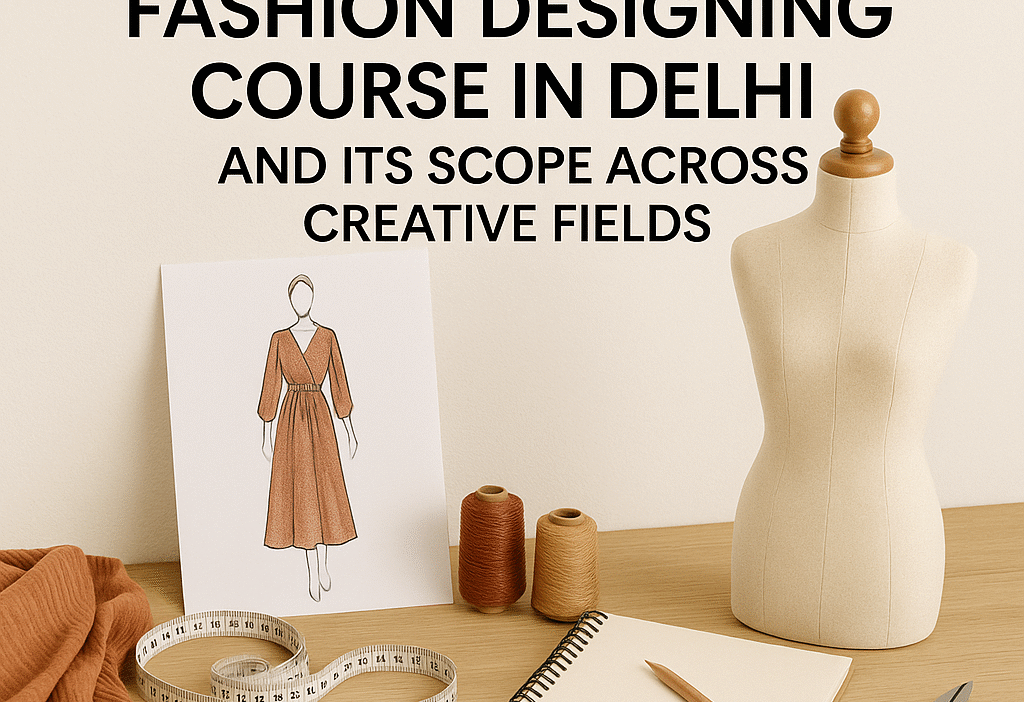Fashion today is a language. It reflects identity, culture, and change. As the industry grows beyond just clothing, more young minds are choosing to study it professionally. For students planning early, enrolling in a fashion designing course in Delhi after 12th opens up pathways not just in design, but across business, management, and communication sectors.
This guide outlines what to expect from fashion design courses after 12th, and how they connect to larger industries shaping the modern world.
Designing Beyond Aesthetics
Fashion design is not just about silhouettes or trends. It requires attention to detail, an understanding of people, and sensitivity to context. When you begin your journey through a formal course, you start learning how fashion connects function, emotion, and story.
A typical fashion designing course in Delhi introduces students to:
- Garment construction and textile studies
- Fashion history and cultural influences
- Fashion illustration and digital tools
- Material sourcing and sustainability
- Brand building and merchandising
- Studio-based experimentation
Over time, these areas allow students to build a strong foundation and prepare for real-world application.
After 12th: Why Start Early?
Many students choose to pursue fashion design courses after 12th to develop creative thinking alongside technical skills. Starting right after school allows you to absorb design knowledge with flexibility and open-mindedness.
It’s also the right phase to explore:
- Your personal design interests
- Long-term career goals
- Collaborative and industry-led projects
- Communication skills essential for presentations and critique
Fashion education isn’t linear. Beginning early gives you time to refine your direction and understand how to balance creativity with structure.
Career Scope in Fashion Design
The scope of fashion design is diverse and still evolving. What once started as a niche profession now touches multiple sectors:
- Apparel Design: Womenswear, menswear, sportswear, couture, and more
- Textile and Surface Design: Exploring patterns, fabric manipulations, and material innovation
- Fashion Styling and Communication: Editorials, campaigns, content strategy
- Sustainable Fashion: A growing field focused on ethics, ecology, and innovation
- Design Research: Investigating social, cultural, or environmental aspects of clothing
- Entrepreneurship: Launching your own label, consultancy, or studio
Graduates from formal programs often find themselves not just in design studios, but in digital teams, branding agencies, retail strategy, and fashion media as well.
How Fashion Connects with Other Industries
Fashion design does not operate in isolation. It adapts and contributes to larger conversations in:
1. Business & Entrepreneurship
Fashion designers today often manage collections, understand markets, and run their own ventures. The ability to think entrepreneurially is key to sustaining a practice.
2. Management
From production planning to retail strategies, management is a vital aspect. Students often choose to move into roles like fashion buyer, merchandiser, or operations coordinator.
3. Trends and Market Analysis
Trend research is essential to the industry. Designers, forecasters, and brand teams work together to read behavior, forecast future patterns, and build responsive collections.
4. Education & Research
With time, many professionals return to academia—either to teach or pursue fashion through writing, research, or documentation. It’s a space where fashion meets critical thinking.
5. Digital Media & Storytelling
With the rise of digital platforms, designers now work alongside photographers, content creators, and tech teams to create immersive narratives. Fashion today is as much about how it is seen as how it is made.
Choosing a Fashion Designing Course in Delhi
Delhi offers a distinct advantage when it comes to design education. The city blends access to production hubs, creative communities, and industry events. While selecting a course, keep the following in mind:
- The course should offer both traditional and contemporary tools
- Focus on studios, labs, and mentorship
- Opportunities for internships or projects with real clients
- Emphasis on portfolio building and self-expression
- Exposure to sustainability, cultural relevance, and future-forward thinking
A fashion designing course in Delhi gives you access to both academic structure and cultural diversity—key elements to build a grounded design practice.
Final Thoughts
Pursuing fashion design courses after 12th is a thoughtful step for those who see fashion as more than style. It is a medium of communication, a tool for innovation, and a driver of change. Whether you end up designing garments, building brands, writing about fashion, or leading teams—design education helps you begin with clarity and intent.
As fashion continues to shift toward inclusivity, sustainability, and digital experiences, the role of a designer is evolving. By starting early and learning deeply, you prepare yourself not just for jobs—but for meaningful participation in an industry that reflects the world we live in.



